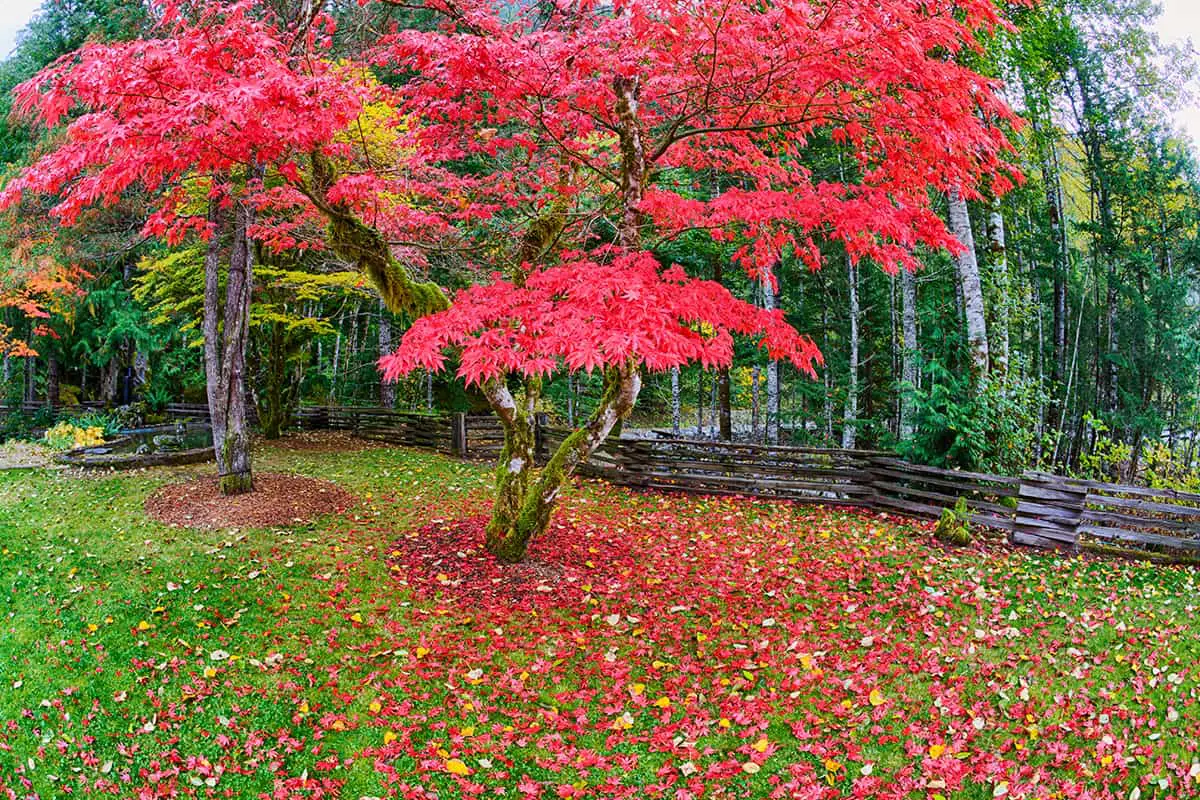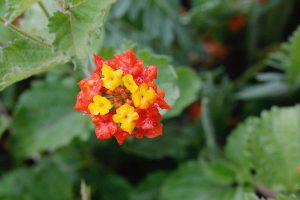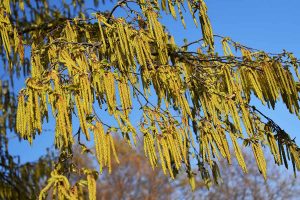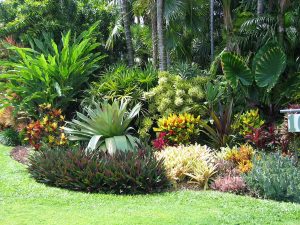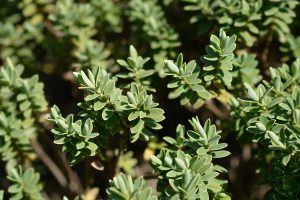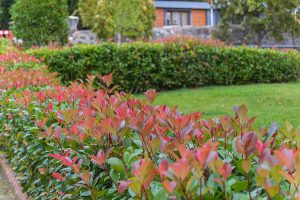Shrubs are sometimes overlooked in the garden because they typically are regarded as not having the grandeur of trees nor the beauty of bedding flowers. However, if you find the right shrubs, neither of these things is true. Many shrubs can grow to be very tall, even taller than some small trees, and there are also plenty of shrubs that have the ability to produce an abundance of beautiful blooms.
Tall shrubs are those which are greater in height than the average size. The average size of a fully grown shrub is around 10 to 15 feet, so any shrubs which exceed this height can be considered as ‘tall.’
If you have a dark garden that is heavily shaded by neighboring trees or buildings, then a shrub that is suitable for growing in the shade will be necessary.
If you have a bright garden, then a tall shrub that is able to create shade and make your garden more functional during the heat of the day will be a big help. Here we look at a range of tall shrubs which are good for growing in shady conditions, as well as tall shrubs which are useful for creating shady spots in the garden.
Table of Contents
Flowering Dogwood
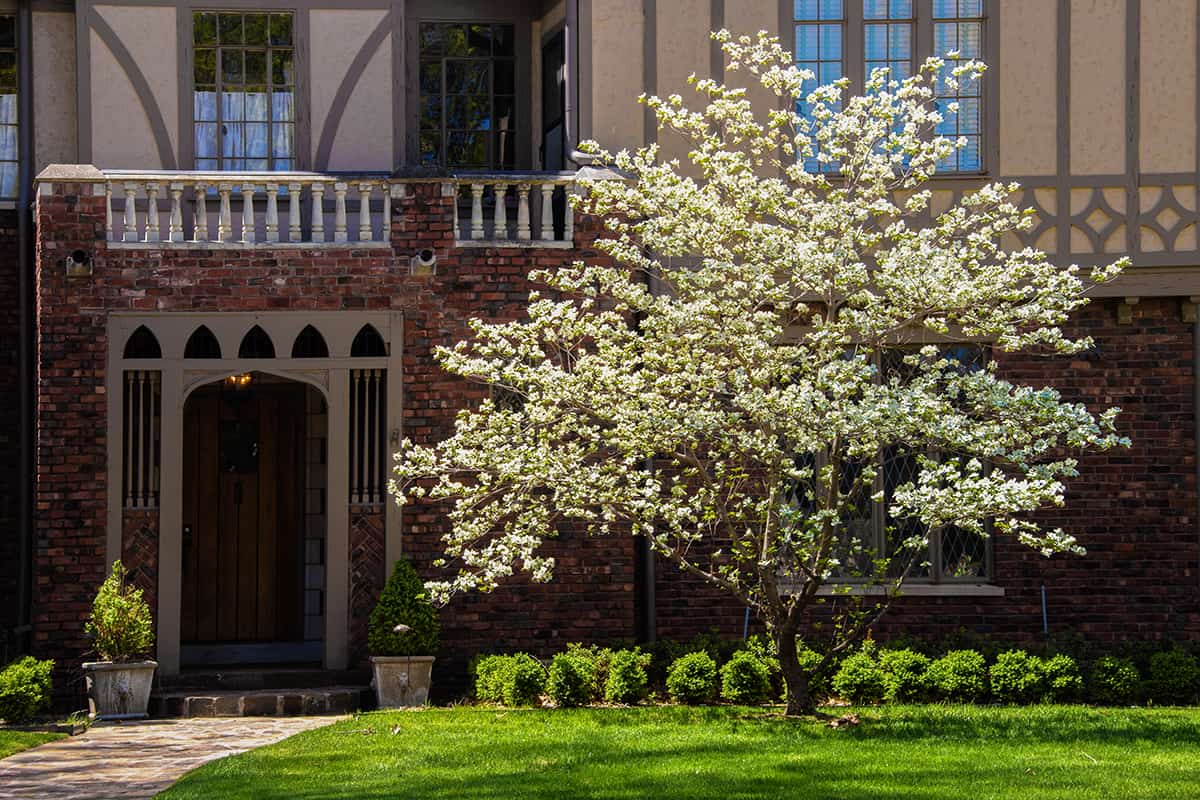
- Botanical name: Cornus florida
- Family: Cornaceae
- USDA hardiness zones: 5 – 9
- Mature height: 15 to 30 feet
- Mature spread: 15 to 30 feet
This tall shrub is native to Mexico and North America. It is deciduous, with a flattened canopy, and can also be grown as a small tree. This is a great shrub to use to add springtime interest to the garden since it flowers profusely at this time of year. The blooms arrive on bare branches before the leaves have emerged in the form of star-shaped white flowers. Typically the flowers will measure around 4 inches across and appear in clusters.
They will develop into berries of orange-red in late summer, and these can remain on the tree until mid-winter for additional interest unless they are chosen as a food source by local birds. The leaves of the shrub are green at first and will turn to rich shades of red and purple in the fall before dropping from the plant.
The Flowering Dogwood grows best in partial shade, making it ideal for adding color and interest to darker corners of the garden. It enjoys well-draining soils which are kept consistently moist. This is an incredibly easy plant to grow, which does not require any pruning or regular maintenance.
Sweet Bay Magnolia
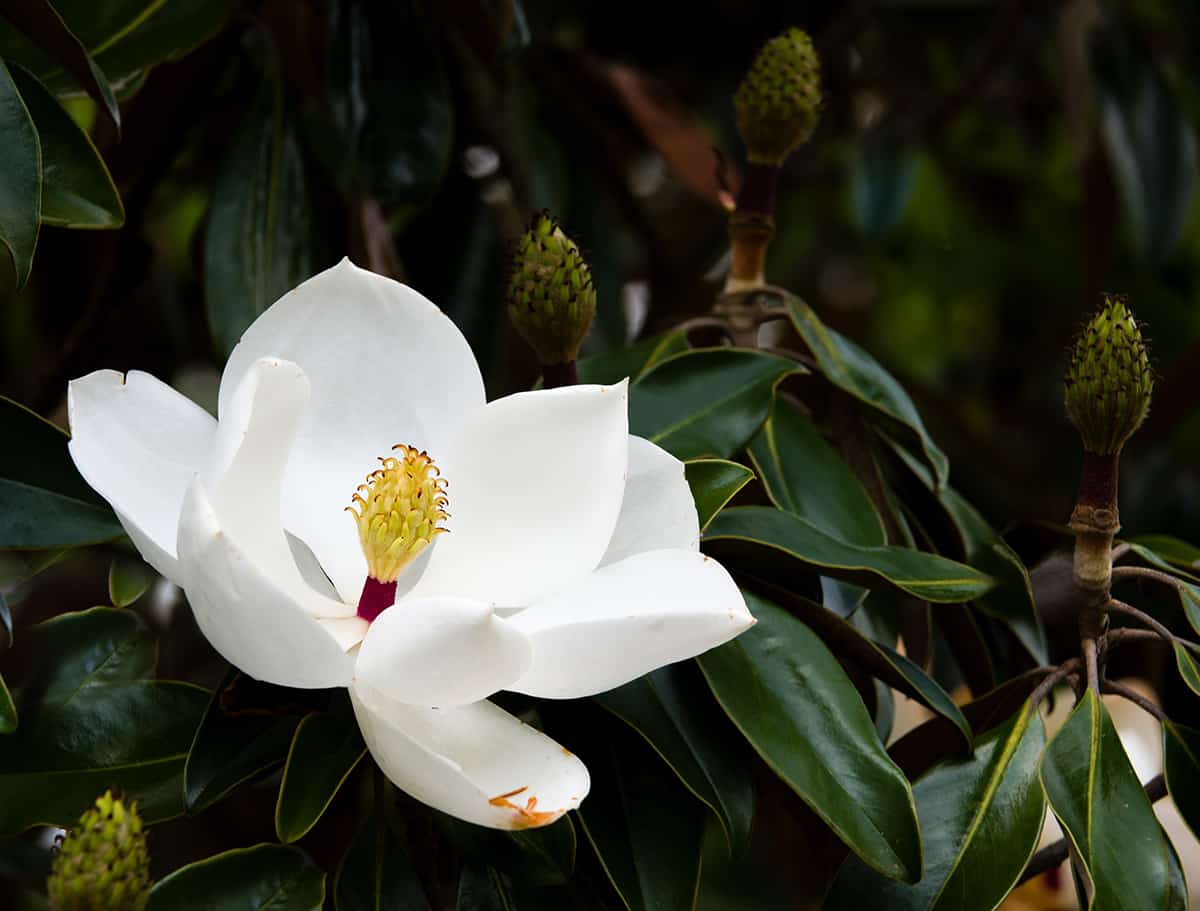
- Botanical name: Magnolia virginiana
- Family: Magnoliaceae
- USDA hardiness zones: 5 – 10
- Mature height: 10 feet to 35 feet
- Mature spread: 10 feet to 35 feet
The Sweet Bay Magnolia is native to the southeastern United States, growing as a tall shrub or small tree. It is an evergreen plant that produces showy flowers, making it ideal for adding interest to the garden throughout every season. The foliage of this plant is very attractive, with glossy green leather-like leaves which are silver underneath.
Flowers bloom in spring and can continue to appear sporadically at any time of year. They are quite large at around 3 inches across and are shaped like cups with a sweet citrus scent. Each flower responds to light, opening in the morning and closing overnight. The Sweet Bay Magnolia works well in shady gardens since it can tolerate both full sun and partial shade, and its tall size means it also works well for creating shade in a bright garden.
It is unlike most other types of magnolia when it comes to preferential growing conditions because the Sweet Bay Magnolia grows best in soils that are wet or boggy. Plant this shrub near a pond or stream, or ensure it is well watered so that the soil can remain moist.
Vine Maple
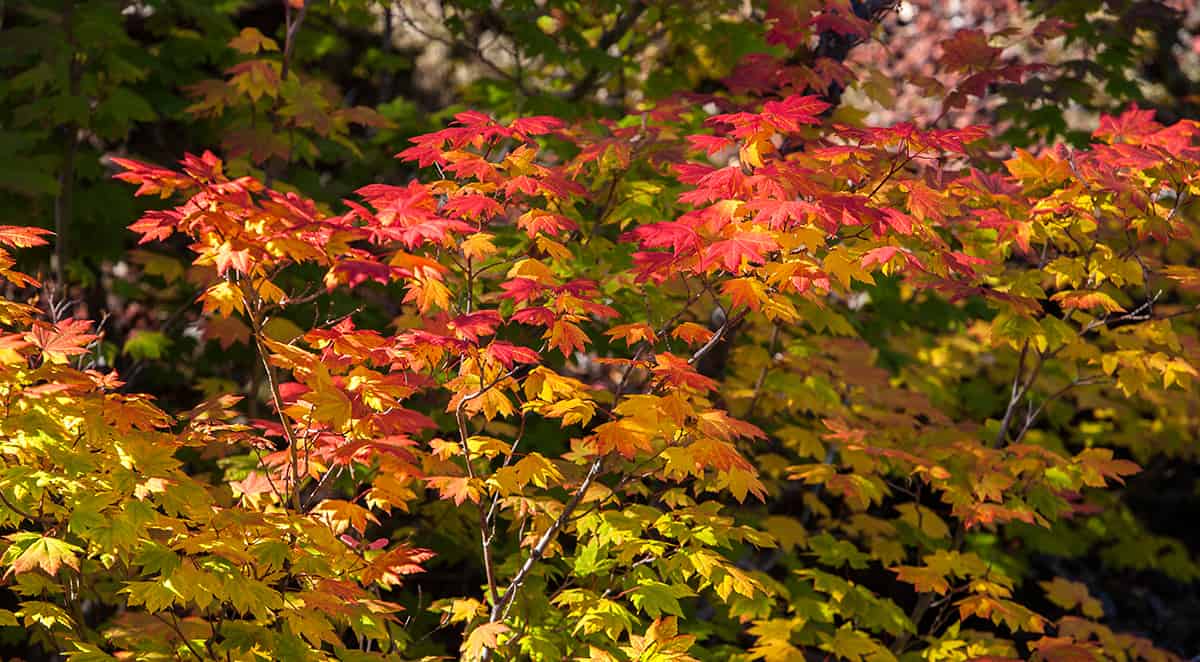
- Botanical name: Acer circinatum
- Family: Sapindaceae
- USDA hardiness zones: 6 – 9
- Mature height: 15 to 25 feet
- Mature spread: 10 to 20 feet
The Vine Maple typically grows to form a wide and tall shrub since it has a bushy habit. However, it can be grown as a small to medium-sized tree.
It is native to western North America, from British Columbia in Canada down to California in the United States. The foliage of this tree is considered to be its best asset, with lobed leaves which are so broad they are almost circle-shaped. The young leaves emerge in spring in a vibrant green shade before progressing to bright orange and deep red in the fall.
The shrub has multiple stems, which will be covered in attractive, bronze-colored bark. This is a very low-maintenance shrub that does not need to be pruned, and it adapts to most types of well-draining soil. It thrives in full sun or partial shade, which makes it ideal for creating shade for smaller plants.
Canadian Serviceberry
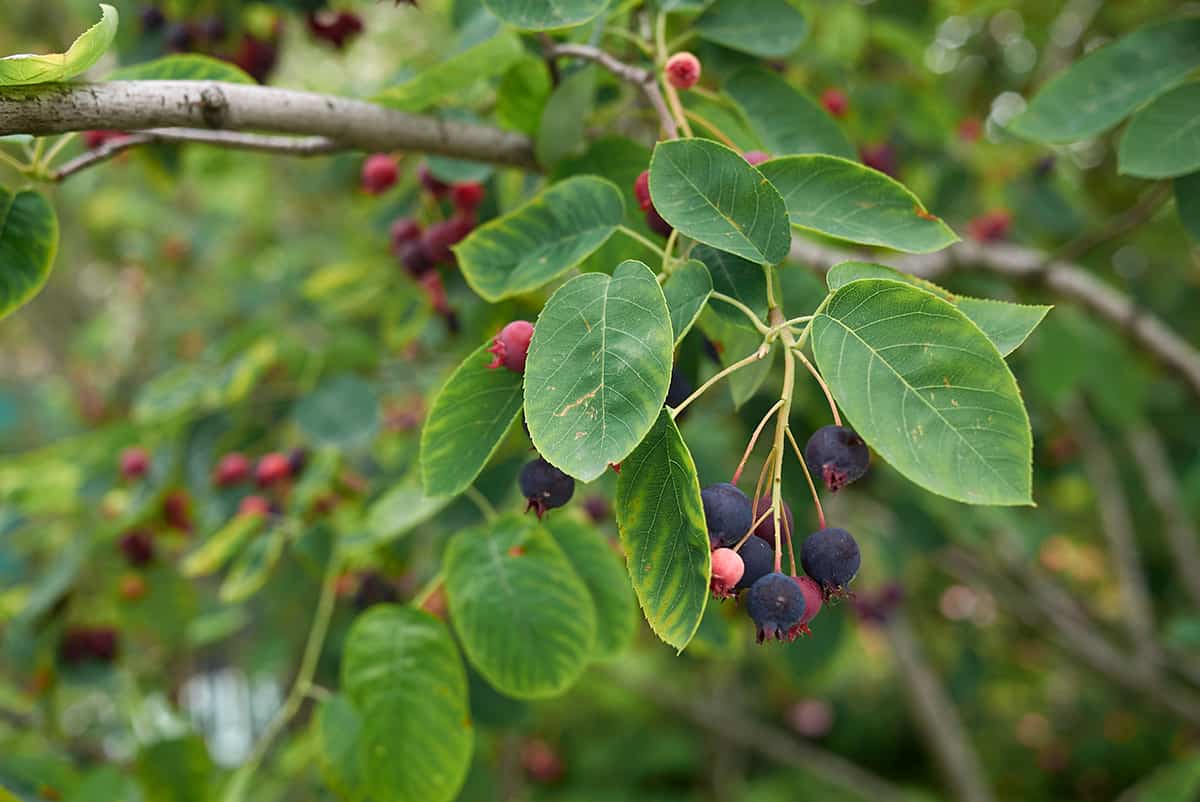
- Botanical name: Amelanchier canadensis
- Family: Rosaceae
- USDA hardiness zones: 4 – 8
- Mature height: 25 to 30 feet
- Mature spread: 15 to 20 feet
This is a North American native deciduous shrub that has a dense growth habit, making it ideal for creating shade during the spring and summer months. It also works well as hedging or for privacy screening and will remain attractive even after the leaves have fallen from the plant in winter due to the appealing shape of the branches and the pale gray bark, which has darker gray marbling.
The flowers of the Canadian Serviceberry start off as clusters of pink buds, which develop into tiny sprays of white blooms. These have a delicate appeal and will attract a variety of pollinators. Berries follow the flowers, which can be eaten by both wildlife and humans. Serviceberries can be used to make jams, pies, and preserves, and they also go by the name of Juneberries.
The foliage of this plant is fresh green throughout summer and spring and develops to intense shades of red, orange, and yellow in the fall. This is a low-maintenance shrub that can be grown in full sun or partial shade, but for the best foliage color and abundance of flowers and berries, position it in full sun.
Greek Strawberry Tree
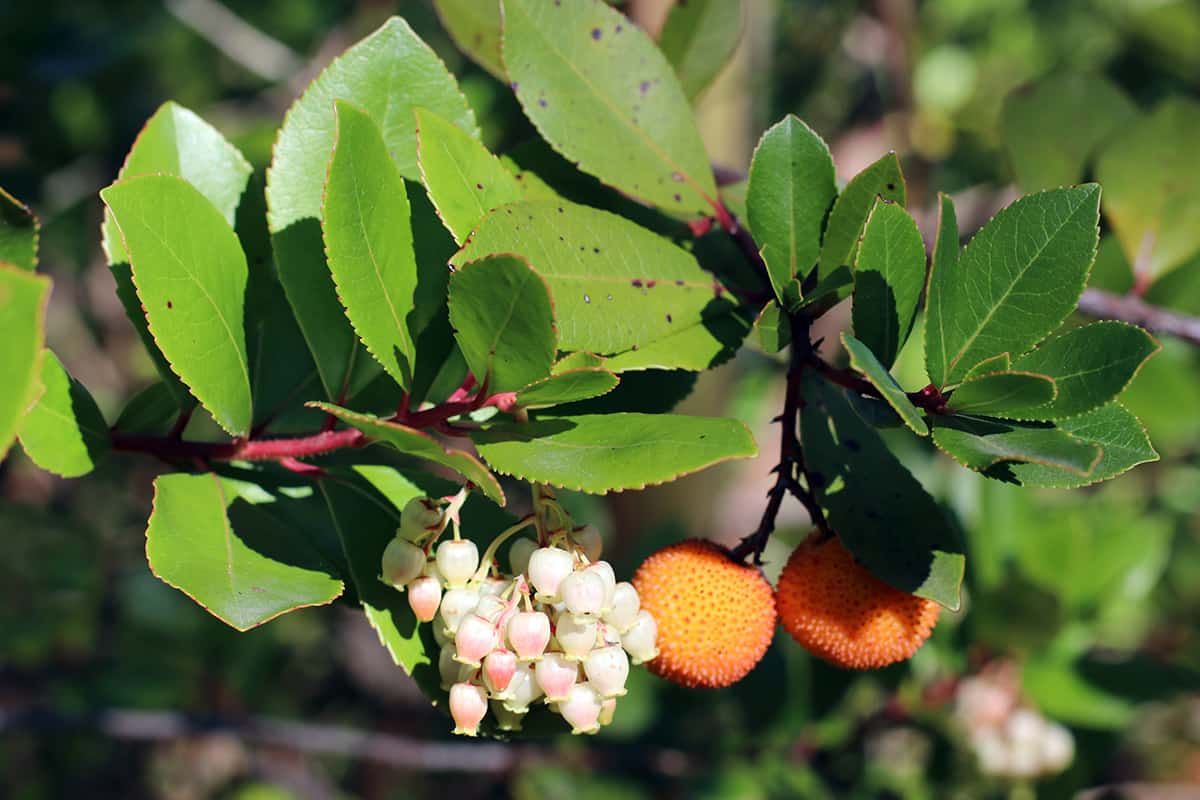
- Botanical name: Arbutus andrachne
- Family: Ericaceae
- USDA hardiness zones: 7 – 9
- Mature height: 20 to 40 feet
- Mature spread: 20 to 40 feet
This is an evergreen plant native to the Mediterranean region, and it can be grown as a large shrub or small to medium-sized tree. It has a loose, spreading habit which makes it ideal for creating large swathes of dappled shade, and since it is evergreen, it will be useful for shade all year long.
The Greek Strawberry Tree is exceptionally attractive, most notable for its interesting bark, which has a two-tone look. The bark exfoliates from the branches in summer to reveal strips of pistachio green, which develops to a deep burnt orange color. The flowers appear at the tips of the branches in spring and can be white or yellow, tinged with green.
These progress into red fruits, which are edible. This is an easy plant to grow, which will adapt to almost any soil type, though it will prefer soil that is well draining. Once established, the Greek Strawberry Tree can survive drought, and it needs to be in full sun or partial shade. This plant will not respond well to transplanting, so don’t try to move it once it is in the ground.
Buttonwood
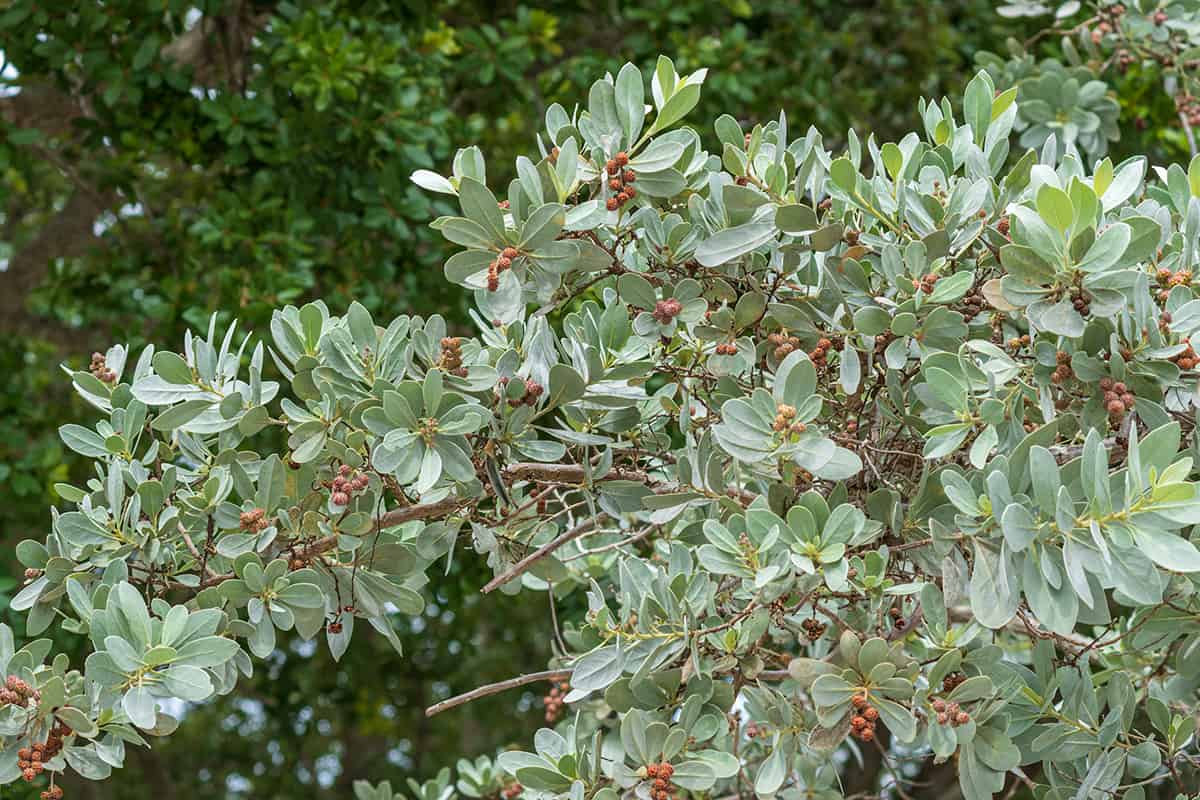
- Botanical name: Conocarpus erectus
- Family: Combretaceae
- USDA hardiness zones: 9- 11
- Mature height: 20 to 40 feet
- Mature spread: 20 to 40 feet
The Buttonwood is a tall mangrove shrub that is native to Florida, and Central and South America. It is also commonly called the Mangrove Buttonwood. It has a spreading habit and twisted branches which give it a very interesting look. The foliage of the tree is paddle-shaped, in a pale blue-green color which is retained throughout the year since the plant is evergreen.
It can be pruned to create a shaped hedge which will provide both privacy and shade, but it also works well for creating shade as a singular specimen due to its great size. The flowers of the Buttonwood are small and green, and they develop into purple-colored fruits, which are said to look like buttons, hence the common name of the shrub.
This is an exceptional shrub that is tolerant of a wide range of conditions, making it easy to grow. It prefers sandy or clay soils but will adapt to most other soil types, ranging from wet to dry. It is tolerant of drought and is also known for its ability to withstand hurricane-force winds. It is very tolerant of salt and coastal conditions, and is therefore commonly seen growing along the edge of the land where it meets the ocean.
Walter’s Viburnum
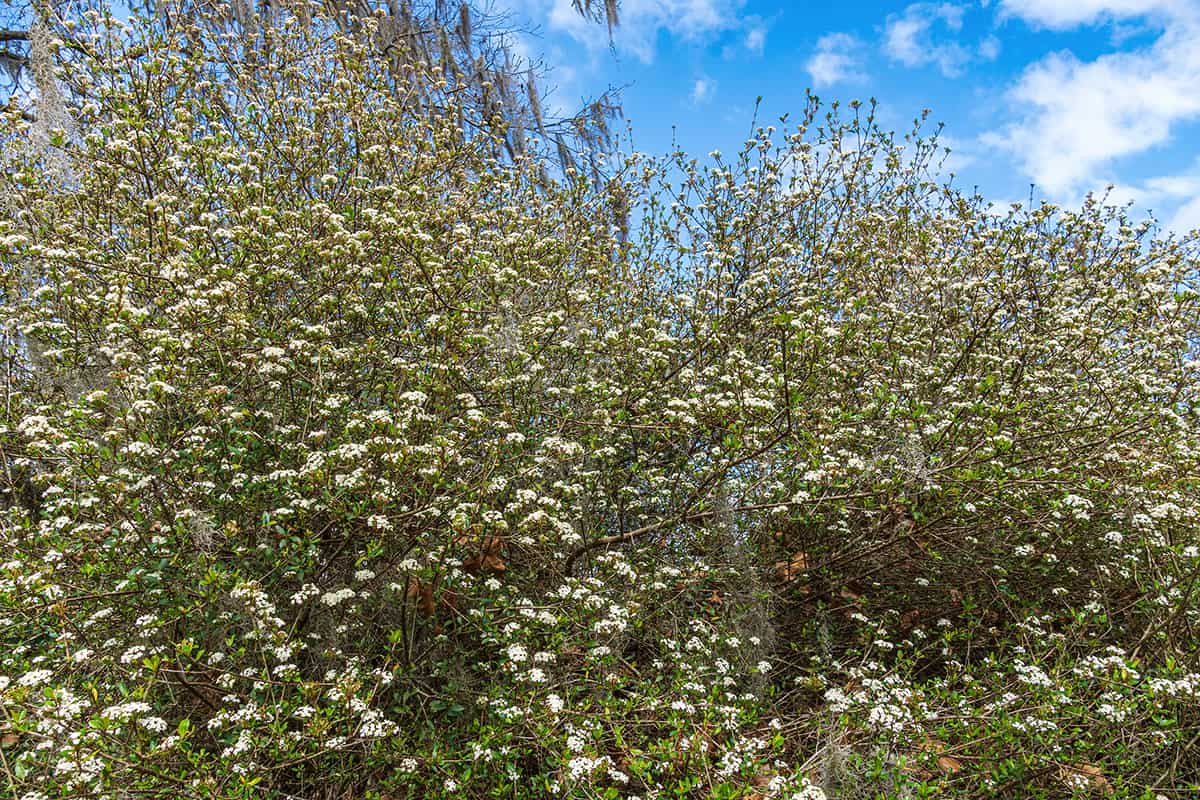
- Botanical name: Viburnum obovatum
- Family: Adoxaceae
- USDA hardiness zones: 6 – 10
- Mature height: 6 feet to 30 feet
- Mature spread: 6 feet to 12 feet
This shrub can be evergreen, semi-evergreen, or deciduous, depending on the climate it is grown in. In warmer conditions, the plant will retain its leaves as an evergreen, while in cooler conditions, it will shed its leaves in the fall and produce new growth the following spring. The plant produces large amounts of flowers in spring, arriving in clusters on the ends of branches. These remain for around three weeks, being enjoyed by a range of pollinators.
The flowers are followed by berries held in dense clusters, which provide an important source of food for wildlife. Walter’s Viburnum is native to the United States, where it grows predominantly along riverbanks and streams, swamps, and coastlines. It thrives in soils that are wet or consistently moist and will grow in either full sun or partial shade.
It can be used to add interest to a shady garden, and its growth habit also lends itself well to being used to create shade. The shrub tolerates pruning well, so it can be trimmed into a neat hedge or used for more naturally shaped privacy screening.
Bay Laurel
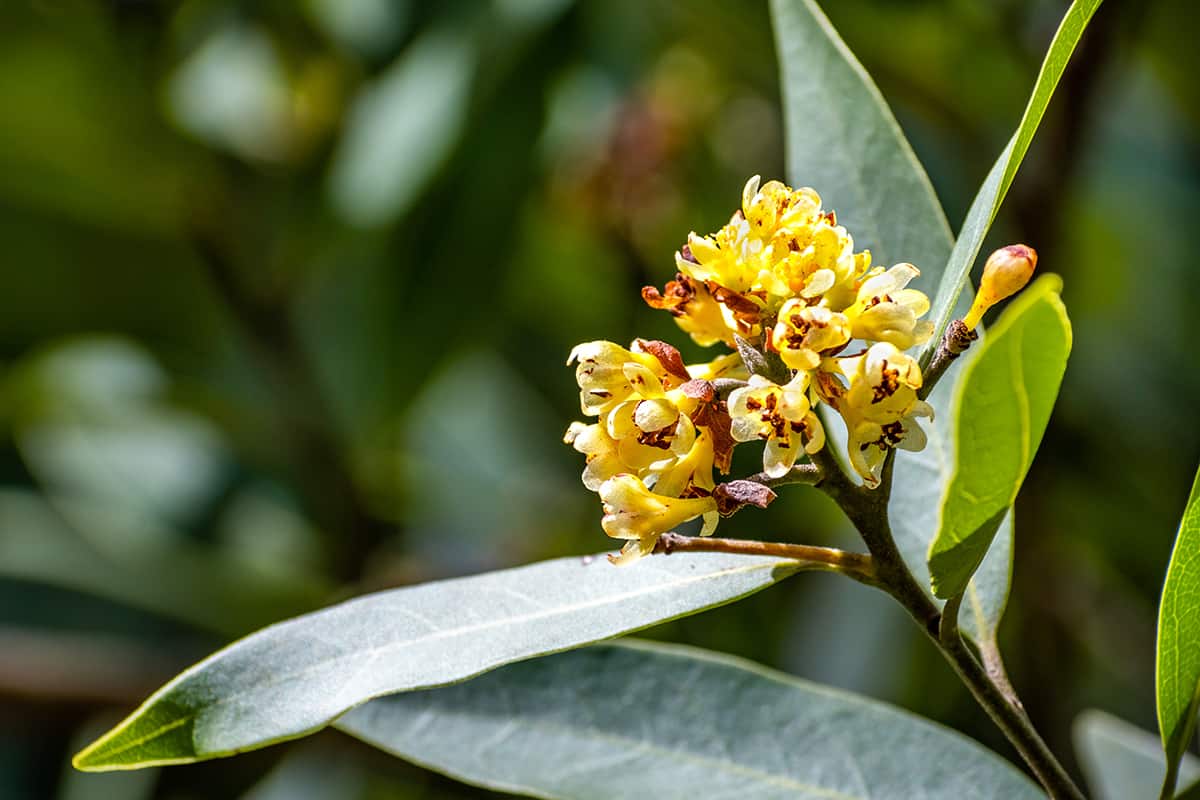
- Botanical name: Laurus nobilis
- Family: Lauraceae
- USDA hardiness zones: 8 – 11
- Mature height: 12 feet to 40 feet
- Mature spread: 12 feet to 40 feet
Also known as the Bay Tree, this plant can be grown as a shrub or a tree. It is native to the Mediterranean region, where the leaves are widely used in cooking to flavor dishes. The Bay Laurel has a pyramidal habit, with the base of the plant spreading wider as it ages. It tolerates pruning well and is often used as a topiary plant for elaborate shaping, and it also works well as a container plant or grown in a row to form a hedge.
The foliage of the Bay Laurel is thick and leathery, with a matte finish. It is highly aromatic and can be removed from the plant at any time to use for flavoring food. The shrub produces small yellow flowers in spring, which give way to shiny dark purple berries. This is a great plant that is highly ornamental and has received the Award of Garden Merit from the Royal Horticultural Society for its excellent qualities.
Along with being attractive to look at, the Bay Laurel also works well as a functional specimen. It can be grown in full sun or partial shade and therefore adds color, interest, and an aromatic scent to a bright or shady garden all year round. It has a slow but spreading growth habit, which means it can be grown to tall heights, making it useful for creating shade and privacy screening.
Grow the Bay Laurel in well-draining soil that is rich in organic content. Although the leaves are edible for humans, all parts of this plant are toxic to pets, including dogs, cats, and horses. Pruned leaves can be stored for use at a later date in the kitchen. Simply store them in an airtight jar in a dark cupboard.
